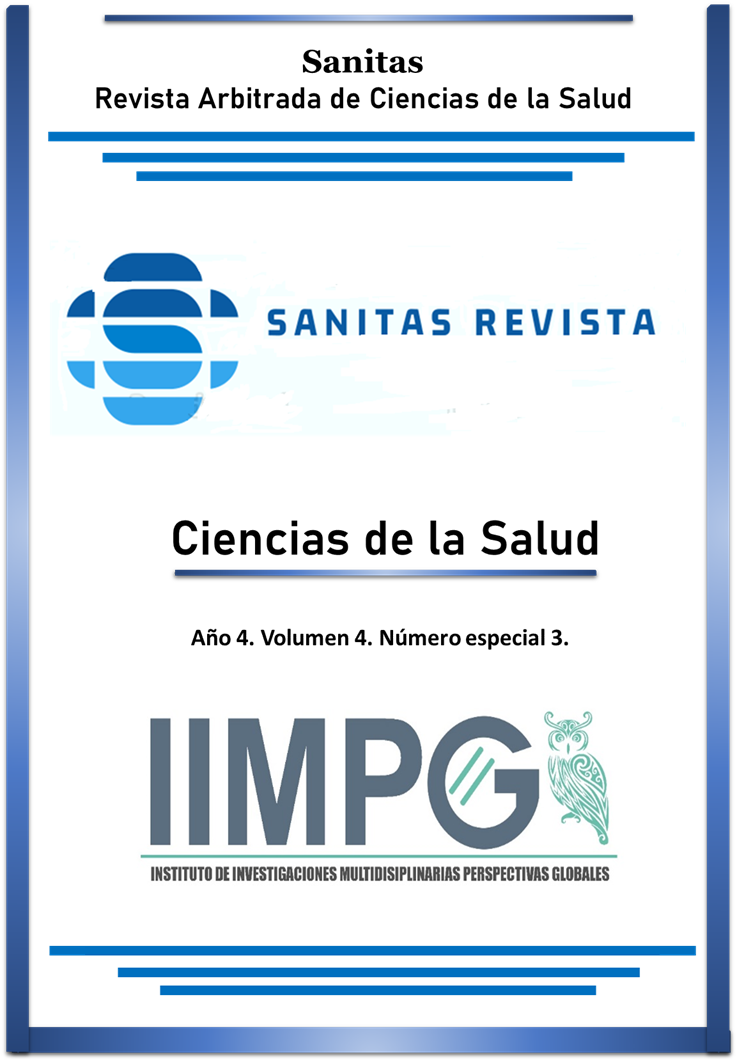Complications of sodium hypochlorite extravasation into periapical tissues during endodontic treatment [Complicaciones por extravasación de hipoclorito de sodio en tejidos periapicales durante el tratamiento endodóntico]
DOI:
https://doi.org/10.62574/nzwc3110Keywords:
sodium hypochlorite, root canal irrigants, endodonticsAbstract
Objective: To analyse the use of sodium hypochlorite in endodontics, its associated risks, and strategies to prevent complications from extravasation. Method: Systematic review following PRISMA guidelines. Twenty articles published between 2020 and 2025 were analysed. Results: Sodium hypochlorite (NaOCl) is the most widely used endodontic irrigant due to its antimicrobial properties and ability to dissolve necrotic tissue. However, its extravasation into periapical tissues can cause severe complications: inflammation, tissue necrosis, facial haematomas, paraesthesia, and airway compromise. Higher concentrations increase antimicrobial efficacy but also increase cytotoxicity. 2.5% NaOCl showed lower toxicity than higher concentrations. Preoperative evaluation with cone beam computed tomography allows the identification of anatomical defects that increase the risk of extrusion. Techniques such as negative pressure irrigation, ultrasonic activation, use of 30G needles, and control of application time (minimum 30 seconds for 5mL) significantly reduce the risk of accidents.
Downloads
References
Vivekananda Pai AR. Factors influencing the occurrence and progress of sodium hypochlorite accident: A narrative and update review. J Conserv Dent. 2023;26(1):3–11.
Nasiri K, Wrbas KT. Management of sodium hypochlorite accident in root canal treatment. J Dent Sci. 2023 Apr;18(2):945–6.
Briggs EA, Toner R, Kilgariff JK. Evidence-based Standard Operating Procedures for the Prevention and Management of Sodium Hypochlorite Accidents in Dentistry. Prim Dent J. 2023 Mar;12(1):97–109.
Abramson A, Sabag E, Nahlieli O. Surgical approach to a severe case of sodium hypochlorite accident: A case report and review of the literature. Quintessence Int. 2021 Sep 9;52(9):806–10.
Pai ARV. Injection of sodium hypochlorite into soft tissues of the oral cavity: A literature review with clinical preventive recommendations. J Stomatol Oral Maxillofac Surg. 2023 Dec;124(6 Suppl 2):101581.
Gupta A, Singh TK. Unravelling the sodium hypochlorite accident with comprehended treatment protocol: A case report. Med Rep. 2024 Aug 1;6:100077.
Demenech LS, de Freitas JV, Tomazinho FSF, Baratto-Filho F, Gabardo MCL. Postoperative pain after endodontic treatment under irrigation with 8.25% sodium hypochlorite and other solutions: A randomized clinical trial. J Endod. 2021 May 1;47(5):696–704.
Claudino Ribeiro JR, da Silveira Bueno CE, Bruno KF, Dos Reis S, de Martin AS, Fontana CE, et al. Impact of sodium hypochlorite on organic tissue dissolution in the periapical region of immature permanent teeth: An ex vivo study. J Endod. 2022 Apr;48(4):555–60.
Boutsioukis C, Gutierrez Nova P. Syringe irrigation in minimally shaped root canals using 3 endodontic needles: A computational fluid dynamics study. J Endod. 2021 Sep 1;47(9):1487–95.
Peters OA, Ballal NV, Abe S, De‐Deus G, Gündogar M, Camilleri J, et al. Regulatory issues related to the use of sodium hypochlorite solutions in endodontics. Int Endod J. 2025 Mar;58(3):368–78.
Pai ARV. Mechanism and clinical aspects of sodium hypochlorite accidents: A narrative review. Dent Med Probl. 2025;62(1):173–85.
Pai ARV. Clinical research on sodium hypochlorite irrigation and extrusion: The gap and scope. J Dent Sci. 2023 Jul 1;18(3):1417–8.
Antimicrobial efficacy of chlorhexidine and sodium hypochlorite in root canal disinfection: A systematic review and meta-analysis of randomized controlled trials - ClinicalKey [Internet]. [citado 2025 Mar 16]. Disponible en: https://www.clinicalkey.com/#!/content/journal/1-s2.0-S0099239920303083
Jäggi M, Magni E, Eggmann F, ElAyouti A, Connert T, Weiger R. Apical pressure generated using conventional syringe irrigation in immature teeth—An in vitro study. Materials (Basel). 2021 May 15;14(10):2580.
Cai C, Chen X, Li Y, Jiang Q. Advances in the role of sodium hypochlorite irrigant in chemical preparation of root canal treatment. Biomed Res Int. 2023 Jan 13;2023:8858283.
Mukundan D, Jeevanandan G. Cytotoxic effect of two different concentrations of sodium hypochlorite: An in-vitro study. Cureus. 2023;16(8):e66999.
Ortiz-Alves T, Díaz-Sánchez R, Gutiérrez-Pérez JL, González-Martín M, Serrera-Figallo MÁ, Torres-Lagares D. Bone necrosis as a complication of sodium hypochlorite extrusion: A case report. J Clin Exp Dent. 2022 Oct 1;14(10):e885–9.
Tribovane DC, Tortajada Bustelo JC, Cañellas ÁR. Sodium hypochlorite-induced facial hematoma following root canal treatment. Iran Endod J. 2024;19(1):46–9.
Sahai A, Gupta A, Abraham D, Aggarwal V, Singh A, Sharma G, et al. Evaluation of postoperative pain using warm versus room temperature sodium hypochlorite as an irrigant in mandibular molars with irreversible pulpitis: A randomized controlled trial. J Conserv Dent Endod. 2023;26(4):458–65.
Fiorillo L, D’Amico C, Meto A, Mehta V, Lo Giudice G, Cervino G. Sodium hypochlorite accidents in endodontic practice: Clinical evidence and state of the art. J Craniofac Surg. 2024 Oct 1;35(7):e636–45.
Downloads
Published
Issue
Section
License
Copyright (c) 2025 Miryan Margarita Grijalva-Palacios, Cristopher Gabriel Grijalva-Noboa, Yajaira Nikol Pupiales-Puma (Autor/a) c

This work is licensed under a Creative Commons Attribution-NonCommercial-ShareAlike 4.0 International License.
CC BY-NC-SA : Esta licencia permite a los reutilizadores distribuir, remezclar, adaptar y construir sobre el material en cualquier medio o formato solo con fines no comerciales, y solo siempre y cuando se dé la atribución al creador. Si remezcla, adapta o construye sobre el material, debe licenciar el material modificado bajo términos idénticos.









